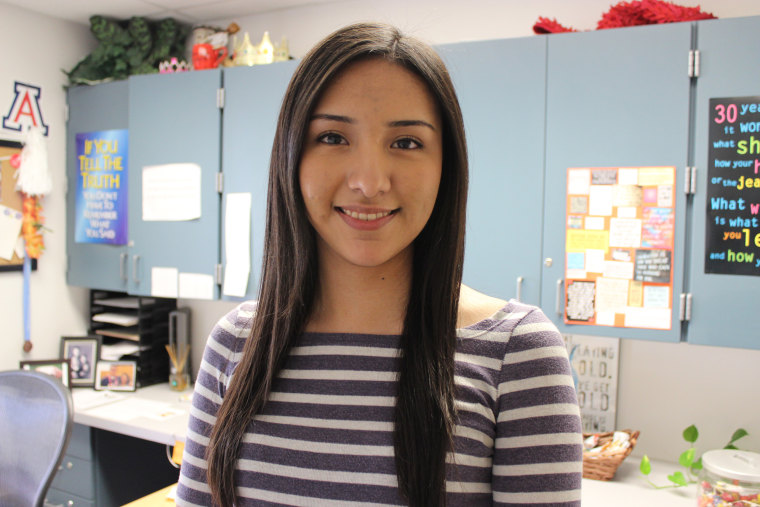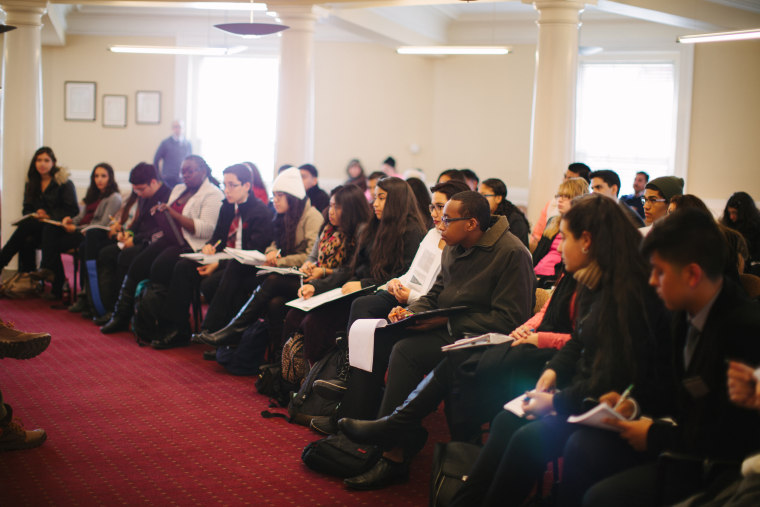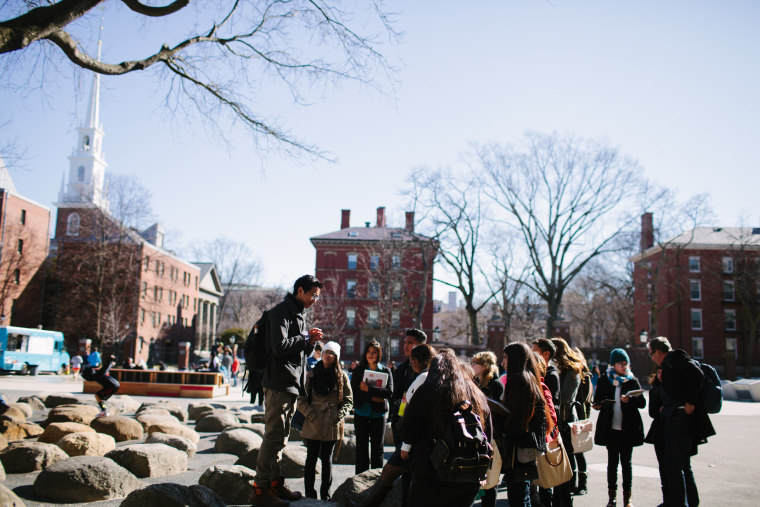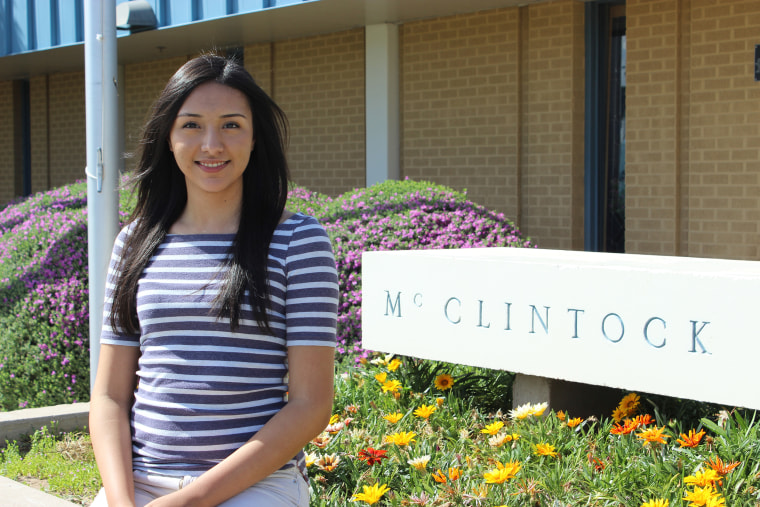MESA, AZ -- From an early age, Carolina Garcia envisioned herself going to one of the nation’s top universities. And now, that dream is about to become a reality.
The 18-year-old senior at McClintock High School in Tempe, Arizona was accepted to two Ivy League schools, Columbia University and Princeton University, as well as several other prestigious colleges and universities. She was also offered hefty financial aid packages to cover tuition.
“I am humbled to have been accepted to these great universities,” said Garcia, adding that she plans to choose what school she’ll attend after a visit to Princeton University. “I am excited to continue my educational journey and expand my horizons, and through this I hope to inspire others to dream big.”
Getting accepted to one of the nation's 8 Ivy League schools - Brown, Columbia, Cornell, Dartmouth, Harvard, Princeton, the University of Pennsylvania and Yale - is not easy. With acceptance rates ranging from 6 to 14 percent, they are some of the most difficult schools to get into. Take Harvard University, a total of 34,295 students applied for admission to the Class of 2018 but only 2,023, or 5.9 percent, gained admission. And nowadays, as more national and international students are competing for a limited number of slots, more and more schools are just as tough when it comes to admission.
Charting a path to a selective college starts early, and there are groups that can help guide Latino students along the way.
Ivy League and other highly selective schools look for students who have stellar grades, high standardized test scores and who challenge themselves with some of the toughest courses offered in high school, such as AP (Advanced Placement) courses. They are also looking for students who are very involved in extracurricular and community activities.

Students who come from affluent families are more likely to be aware of these requirements than are students of low-income families like Garcia, whose parents never went to college. Many Latino students and families may also get discouraged by the $60,000 per year price tag and aren’t aware that Ivy League schools and other highly selective universities offer generous need-based financial aid packages.
Deborah Santiago, co-founder of Excelencia in Education, said Latino students can improve their chances of getting an Ivy League education if they start preparing early. That includes researching admission requirements and taking harder courses with each advancing year.
“The path starts early with an awareness of what the expectations are from those very selective colleges and then making sure that you’ve mapped out, literally from middle school, the kind of academic preparation that will get you there,” said Santiago.

Santiago said students should surround themselves with peers who share the same interest and ambition to attend a highly selective school. This could come in the way of participating in study sessions together, joining college-preparatory programs or reaching out to students who are already at an Ivy League school or other prestigious university and can help pave the way.
That’s exactly what Garcia did. She began preparing for the Ivy League application process starting in her sophomore year. She took honors classes and got involved in a number of extracurricular activities, all while working to provide for her mother and brother.
She also joined the Arizona Ivy League Project. The program guides economically disadvantaged, high-achieving students through the competitive admissions process. It also connects them with students who grew up in the same neighborhoods and are now attending Ivy League schools.
“A lot of the students we serve, they don’t have the educational background or the parents aren’t there to support them, so we’re able to guide them all the way through the process,” said James Montoya, the organization's executive director.
The program also gives students a chance to tour Ivy League campuses on the East Coast and meet with current students and admission officers. This year they visited 10 schools, including Harvard University, Wellesley College and Brown University. Montoya said the visits help students envision themselves attending these prestigious colleges and universities.
Viviana Arroyo, a 19-year-old from Arizona, said she definitely saw herself at Yale University when she first visited the campus as a high school student. She is now a freshman there and said it’s due in large part to the help she received from programs like the Arizona Ivy League Project.
“I didn’t have the resources that a lot of students who come to these types of schools have,” Arroyo said. “But because of programs like Be a Leader and the Ivy League Project, I was able to get the help and supplement what I didn’t have.”

Andres Gonzalez, a 21-year-old senior at the University of Pennsylvania, said he did not have the resources to apply for an Ivy League school either. “I always knew I wanted to go to a top college, but I didn’t know how I was going to get there,” he said.
While attending high school in California, Gonzalez was part of a college-preparation program called Bright Prospect. He said the program paved the way and helped him get accepted to his dream school. In May, he’ll become the first in his family to graduate from college.
“It’s an important milestone,” Gonzalez said about graduating.
Timothy Sandoval, director of Bright Prospect, said the goal of the program is to “make sure students not only get into college, but that they graduate from college.” The program accomplishes that goal by staying in communication with students throughout their college years.
In addition, the program works closely with Latino parents, many of whom feel nervous about their children leaving home and going away to college. The program teaches parents about the benefits of going to an Ivy League or other prestigious schools.
“Sometimes our families don’t understand the difference between a local community college versus Princeton University,” said Debbie Gallardo, a Bright Prospect alumni who graduated from Franklin & Marshall College in 2010. “That’s what my parents thought. ‘Why can’t you just stay and go to the community college here?’ They didn’t understand the difference in terms of the types of institutions, so having those conversations with parents is really important.”
Programs like the Arizona Ivy League Project and Bright Prospect are effective in helping Latino students get admitted to Ivy League schools. But they are able to reach only so many students.
Sandoval said he would like to see the Ivy League schools doing more outreach to Latino students.
“I think sometimes students may not even think they have a chance at getting into an Ivy League college or university,” he said. “They’re probably thinking, ‘Because I go to this high school, I don’t have a shot at getting into a Harvard or Yale.’ And I think that’s where the Ivy League type of colleges have an important role to play in getting out to the high schools, getting out to community-based organizations to show that it is possible.”
